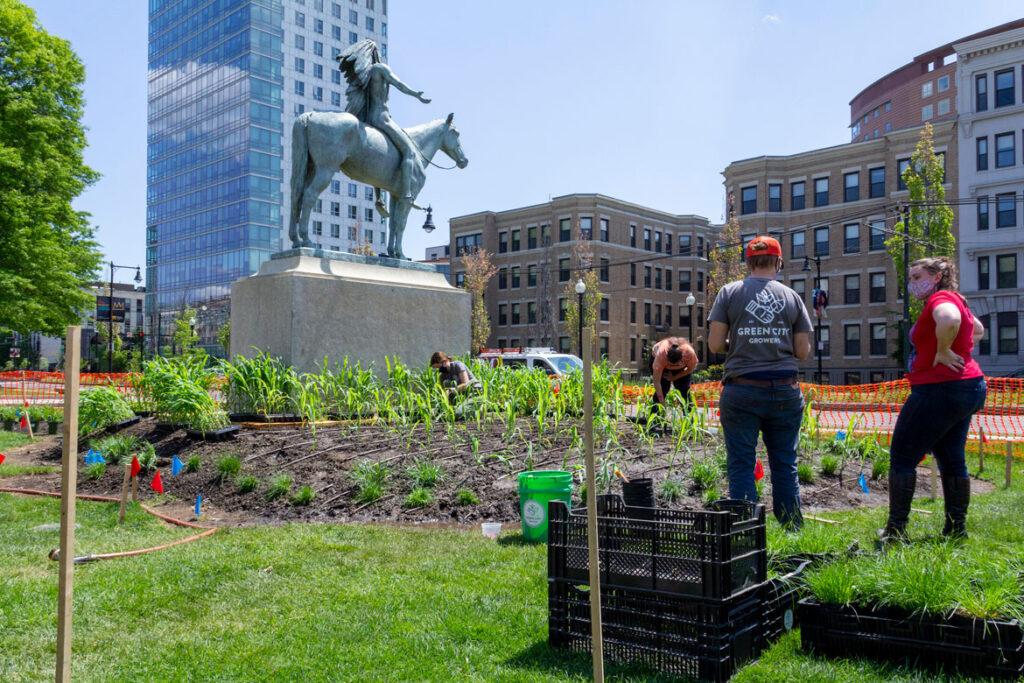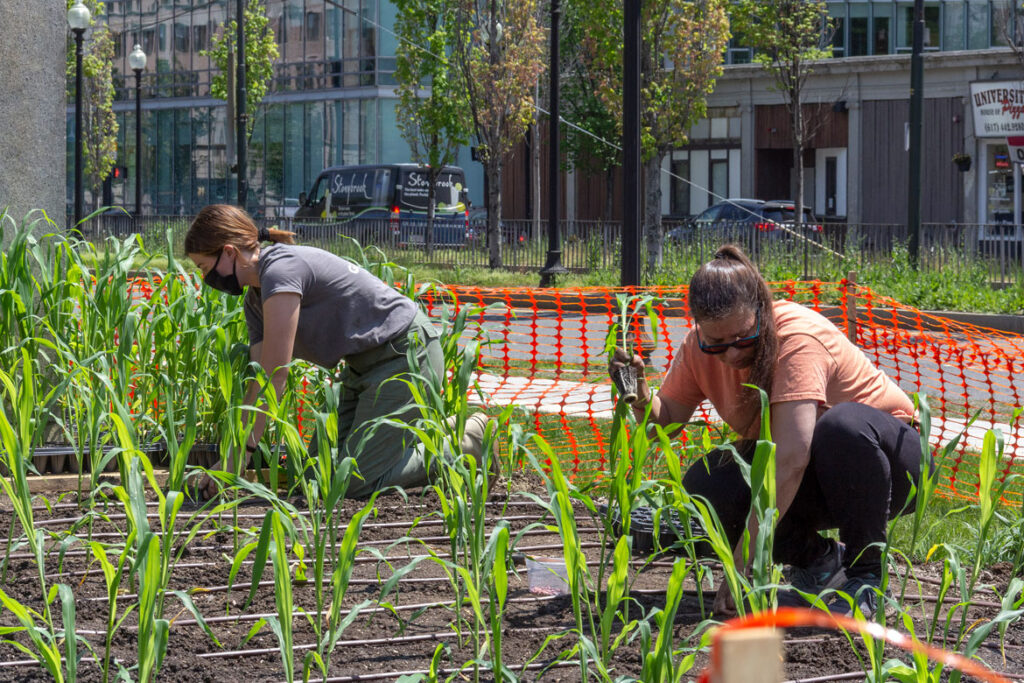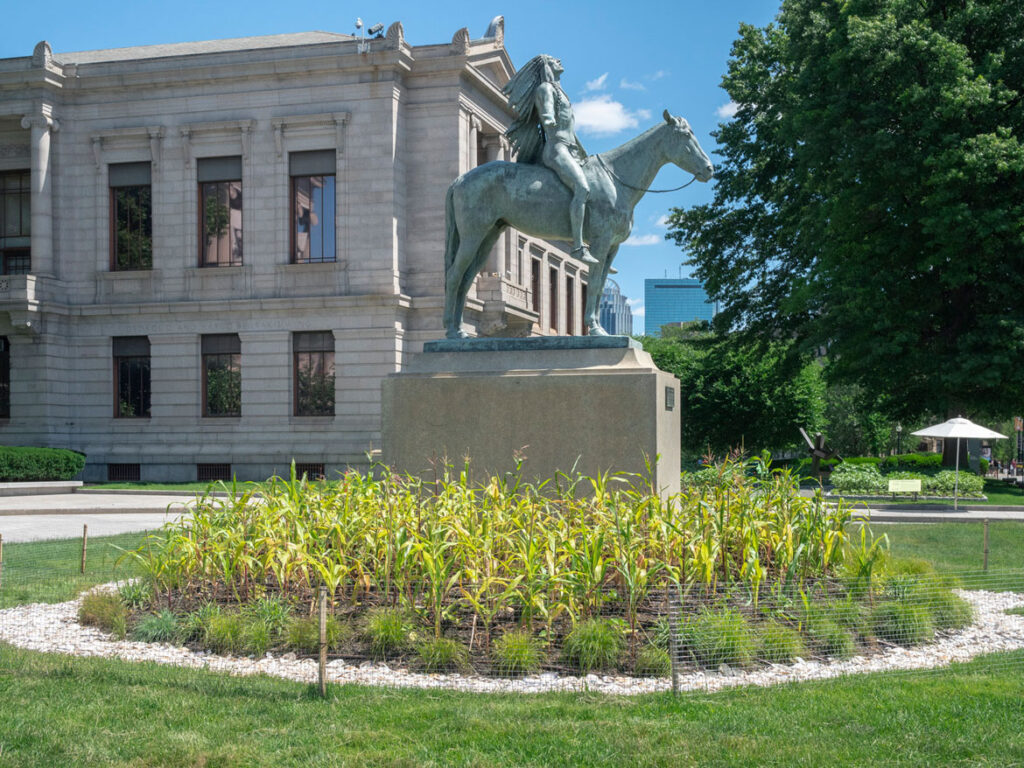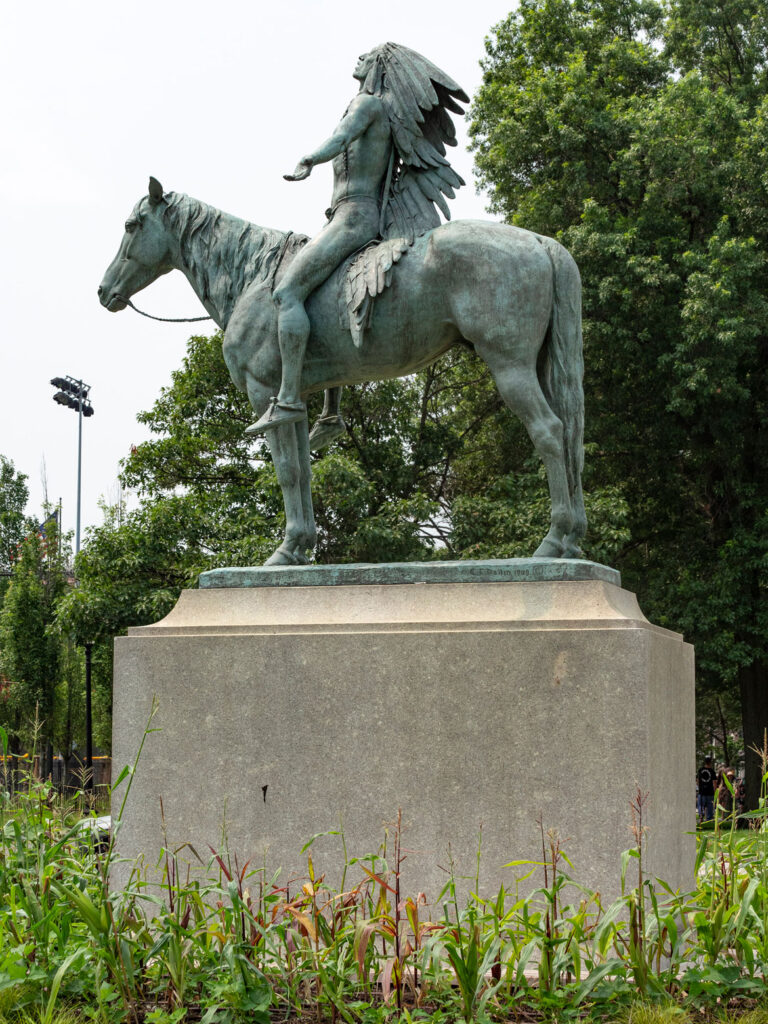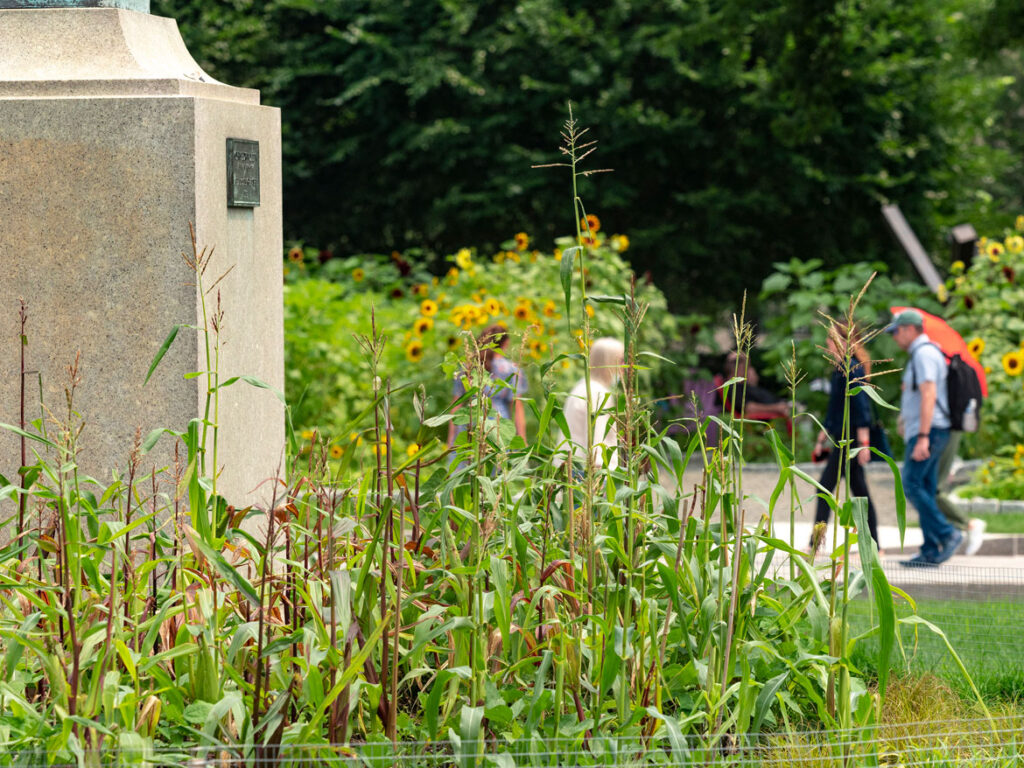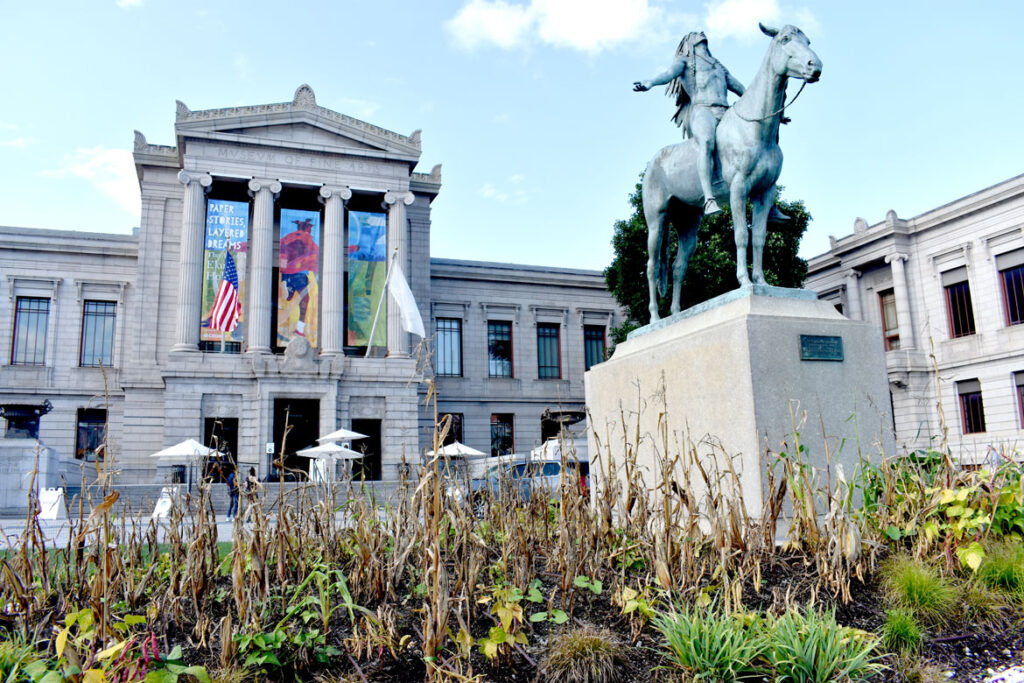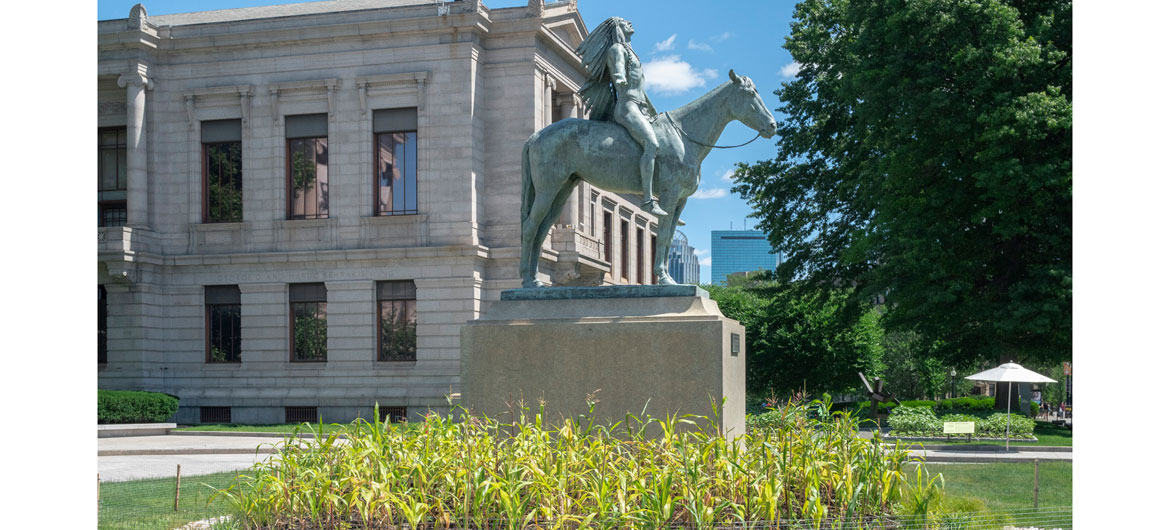Last year, Boston’s Museum of Fine Arts reached out to Aquinnah Wampanoag artist Elizabeth James-Perry to develop a project. She is a biological illustrator and gardener, as well as an artist known for creating wampum belts, weaving sashes and bags from locally-harvested, hand-spun milkweed stalks with natural dyes, and fashioning pendants, collars and other jewelry from quahog shells.
The museum’s invitation reminded her of an idea she’d had for garden of corn in Boston, an idea that come to her in reaction to a lawsuit fighting the tribe’s effort to hold land in trust and the Trump Administration’s attempt to disestablish the tribe’s reservation in Masphee and Taunton.
“To my horror, Rhode Island and 21 other states jumped on the suit all questioning the right of tribes to take land into trust,” she says. Land—homeland—is intrinsic to tribes’ abilities to exist, she says. “It’s not a very hospitable time for tribes.”
James-Perry, who lives in southeastern Massachusetts, imagined gathering tribal women together to plant corn on Boston Common—“to garden wherever we need to.” She says, “I didn’t do anything with it, but I always kept that image because it gave me hope.”
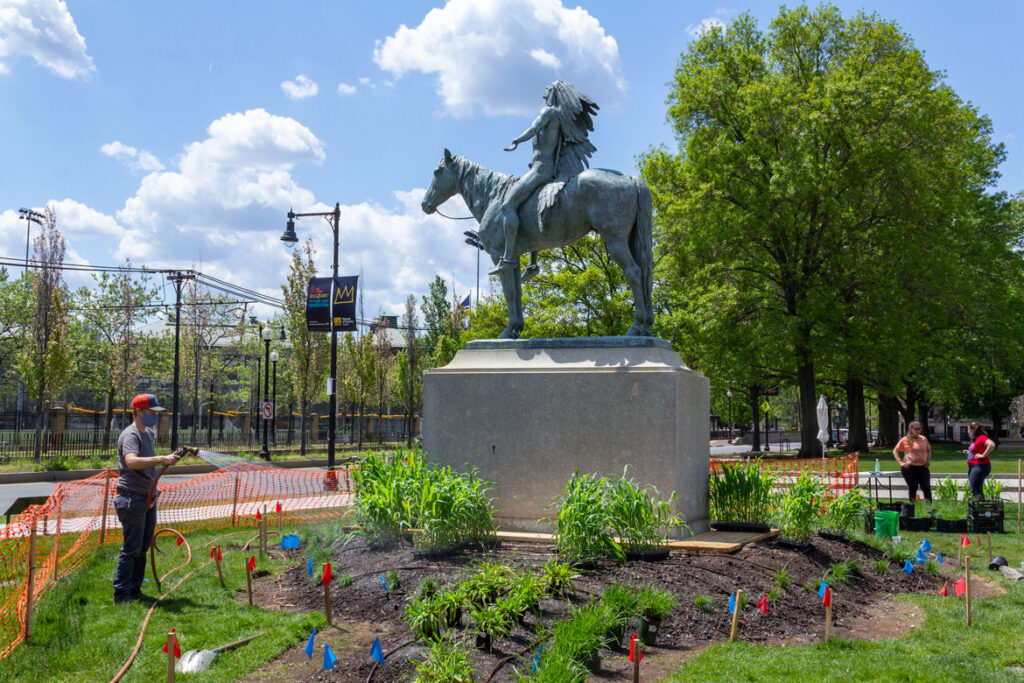
In May, at the museum’s invitation, she and collaborators planted a garden of corn, beans and sedges around Cyrus Dallin’s 1909 statue “Appeal to the Great Spirit,” the White artist’s depiction of a Native American on horseback with his arms spread wide, which has stood on the Museum of Fine Arts’ front lawn since 1912.
The project was part of “Garden for Boston” for which Roxbury artist Ekua Holmes also planted nearly 3,000 sunflowers on the eastern side of the museum’s front lawn for her “Radiant Community” project, which expanded her 4-year-old community planting program “The Roxbury Sunflower Project.”
James-Perry, Holmes’s collaborator Lolita Parker Jr., and MFA Director Matthew Teitelbaum will speak during the “‘Garden for Boston’ Harvest Celebration” at the museum’s Huntington Avenue entrance on Saturday, Sept. 25, from 3 to 4 p.m., to celebrate the closing of “Garden for Boston.”
James-Perry initially sketched out her proposal, finding herself portraying the man atop the horse more as an Indigenous person from around here. “Raven Reshapes Boston,” as the project became called, “is a nod to the eastern Native story about the traditional knowledge keeper, Raven, who brought corn to the region for Native women to grow and sustain their families. The garden is meant to welcome, intrigue and provoke discussion. Situated around the Dallin statue, it will be a lively and authentically Native counterpoint to the controversial figure,” James-Perry said in a museum announcement. “The horseshoe crab shape, along with the white crushed oyster shell border, connects the planting to my coastal identity. It recalls rich sea harvests and coastal feasts, and is a reminder of the shell middens once ubiquitous in what is now a concrete cityscape. The garden is a reclamation of Boston as Indigenous land.”
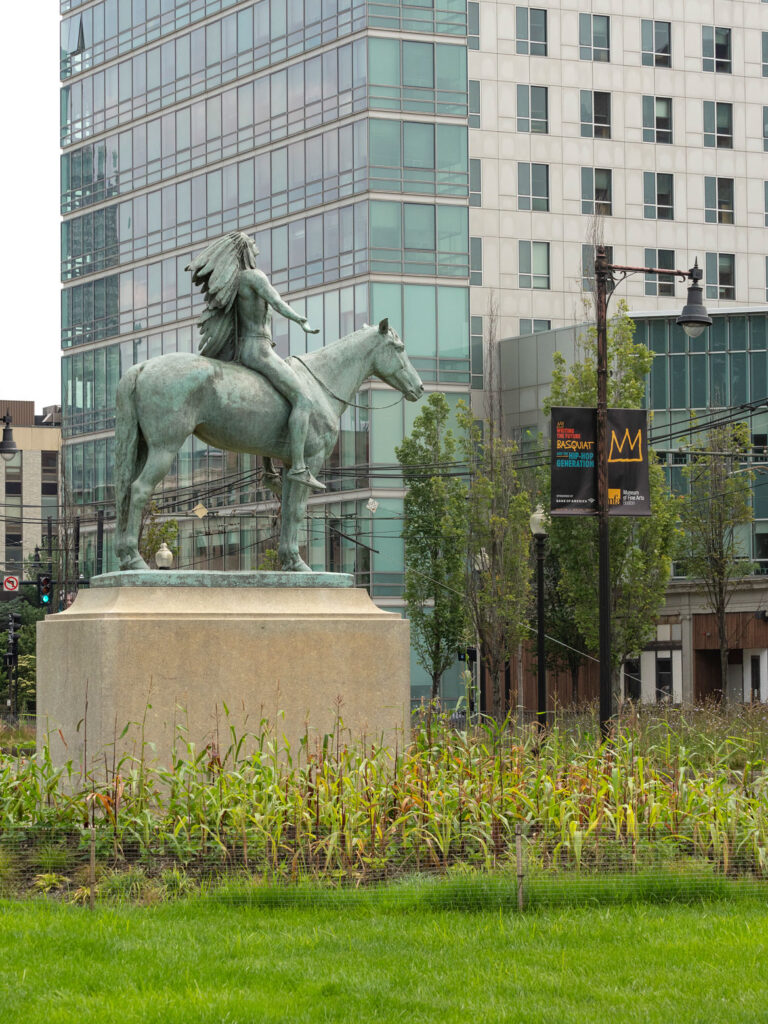
James-Perry wanted to create something green, growing, alive, in motion, in contrast to the “still static patriarchal image in bronze.” She says, “I didn’t want the garden to center the statue so much as soften it, obscure it, and change the vibe.”
“One of the tensions is the Dallin sculpture isn’t Native-made or a Native artist, but is very prominent. It sits out there as a not very relevant representation of Native Americans,” James-Perry says. She describes it as “ersatz. It’s plastic culture.” She says, “I don’t know what that fascination is. It doesn’t make sense. It’s not accurate.”
“Raven Reshapes Boston” is “a little bit of a metaphor for Boston. As a Native person going around Boston there’s a lot of concrete and a lot of stone, but there isn’t a consistent way of having earth shown,” she says. Boston has become a cityscape, not well reflecting the beauty of its coastal location
“I do a lot of gardening here and I encourage everybody I can to plant,” James-Perry says. “If you’re working to preserve traditional arts and culture that are place specific and resource specific … to be able to do Wampanoag art you need to be near the land that grows the milkweed.” They maintain culture, cuisine and art by mindfully protecting spaces. “There are ways of doing things where you actually preserve the character of New England.”
Previously:
May 15, 2021: Artists To Turn MFA Lawn Into A Garden
If this is the kind of coverage of arts, nature, cultures and activisms you appreciate, please support Wonderland by contributing to Wonderland on Patreon. And sign up for our free, (hopefully) weekly newsletter so that you don’t miss any of our reporting. (All content ©Greg Cook 2021 or the respective creators.)
